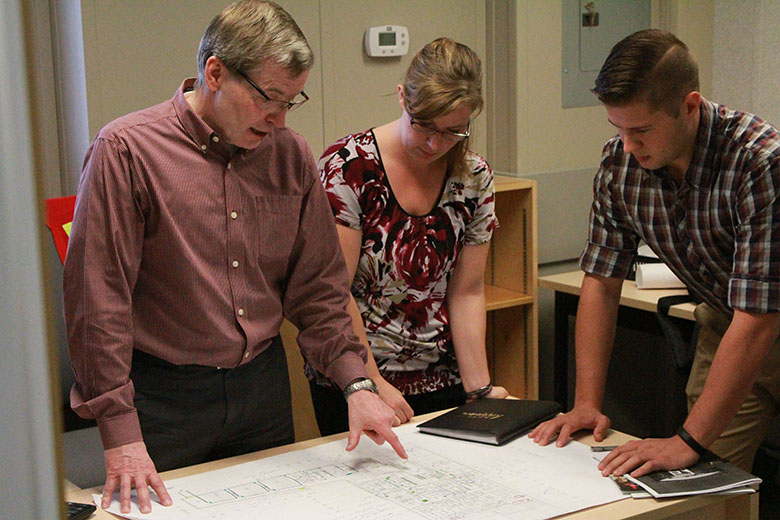Building the cutting-edge home for future generations of scientists isn’t the only thing the Destination Project is helping to develop. Nicole Meurs (BMgt ’16) and student Nick Gabbin are two budding project managers who say their cooperative education placement with the Destination Project has helped build confidence and given them a glimpse into their future career paths with real-world experience.

“Getting to see how your skills from the classroom transition into the workplace is something I am so thankful I had the opportunity to experience. My placement allowed me to take on real responsibilities for the project, but I also felt supported by the entire project team because I was working and learning in a teaching environment too,” says Meurs.
When Meurs’ cooperative education placement came to an end in December, Destination Program Manager, Brian Sullivan hired her as a full-time project coordinator for the term of the build, something Sullivan says was a great thrill for him and the rest of the project team.
“When you see students grow and develop their skills throughout their placement, it brings a real sense of pride and joy because you’ve helped them along on their career path and it’s always nice when you can offer them their first job too,” smiles Sullivan.
For Gabbin, his placement will finish up in December and he is hopeful to also earn a spot on the Destination Project team. Gabbin says the experience he’s gained working in a cooperative education placement is invaluable and something he’d never expected to get as a 23-year-old student.
“Being able to experience responsibility on a job as big as this is just incredible and not just in terms of the work. Learning how to manage relationships and communicate with a team under the leadership of folks like Brian who have been at this for years is a once in a lifetime opportunity,” says Gabbin.
Sullivan believes the students he’s hired over his 30 years at the U of L have all showed a dedication to their placement positions and attributes their success to how their ability to think independently and have the responsibility to get the job done.
“A co-op placement teaches you how to be part of a team and how to transition from student to worker. It’s a unique opportunity that we’re able to offer and for those that get to work on this job in particular, it’s especially unique,” says Sullivan.
With construction ramping up as the Fall semester approaches, both Meurs and Gabbin are excited to see how their peers will engage with the rapidly changing landscape on campus and the possibilities it will allow for future co-op students.
“Markin Hall was my home while I was a management student and I can’t imagine what my education would have looked like without it so by working on this project, I am just giving back to future students who are going to make amazing discoveries in the building I helped to construct,” said Meurs.
You can watch the construction of the Destination Project come together before your eyes thanks in part to the efforts of Gabbin. His first task working on the Destination Project was to set up live web cameras that continuously stream. Be sure to check out the progression of the build at destinationproject.ca.



Recent Comments